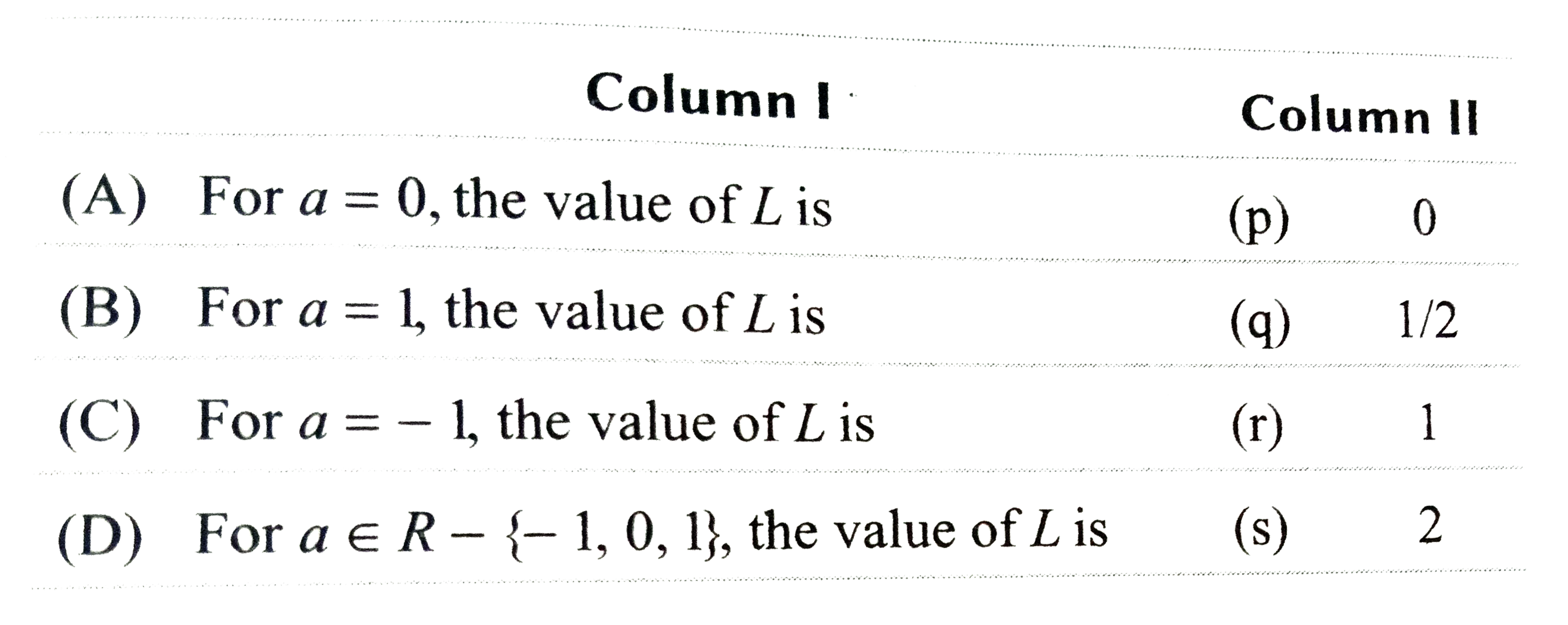We are given the curvers through the point any , where is differentiable , R through Tangents drawn to both the curves at the points with equal abscissae intersect on the same point on the X- axists
The number of solutions is equal to Solution in Punjabi
0
1
2
None of these
The correct Answer is:B
Step by step video & image solution for We are given the curvers y=int_(- infty)^(x) f(t) dt through the point (0,(1)/(2)) any y=f(x), where f(x) gt 0 and f(x) is differentiable ,AA x in R through (0,1) Tangents drawn to both the curves at the points with equal abscissae intersect on the same point on the X- axists The number of solutions f(x) =2ex is equal to by Maths experts to help you in doubts & scoring excellent marks in Class 12 exams.
Updated on:21/07/2023Topper's Solved these Questions
- DEFINITE INTEGRALBOOK - ARIHANT MATHSCHAPTER - DEFINITE INTEGRALEXERCISE - Exercise (Matching Type Questions)
4 Videos
- DEFINITE INTEGRALBOOK - ARIHANT MATHSCHAPTER - DEFINITE INTEGRALEXERCISE - Exercise (Single Integer Answer Type Questions)
4 Videos
- DEFINITE INTEGRALBOOK - ARIHANT MATHSCHAPTER - DEFINITE INTEGRALEXERCISE - Exercise (More Than One Correct Option Type Questions)
10 Videos
- COORDINATE SYSTEM AND COORDINATES BOOK - ARIHANT MATHSCHAPTER - COORDINATE SYSTEM AND COORDINATES EXERCISE - Exercise (Questions Asked In Previous 13 Years Exam)
7 Videos
- DETERMINANTS BOOK - ARIHANT MATHSCHAPTER - DETERMINANTS EXERCISE - Exercise (Questions Asked In Previous 13 Years Exam)
18 Videos
Similar Questions
Let limT→∞1T∫T0(sinx+sinax)2dx=L, then

View SolutionIf f(x)=∞∑n=1sinnx4nand∫π0f(x)dx=log(mn), then the value of (m+n) is ….
View SolutionIf f(x)=[sin−1(sin2x)] (where, [] denotes the greatest integer function ), then
View SolutionIf a vertex of a triangle is (1, 1) and the mid-points of two side through this vertex are (-1, 2) and (3, 2), then centroid of the triangle is
View SolutionIf a2+b2+c2=−2, and f(x)= ∣∣ ∣ ∣∣1+a2x(1+b2)x(1+c2)x(1+a2)x1+b2x(1+c2)x(1+a2)x(1+b2)x1+c2x∣∣ ∣ ∣∣ , then f(x) is a polynomial of degree
View SolutionGiven two curves: y=f(x) passing through the point (0,1) and g(x)=∫x−∞f(t)dt passing through the point (0,1n). The tangents drawn to both the curves at the points with equal abscissas intersect on the x-axis. Find the curve y=f(x).
View SolutionWe are given the curvers y=∫x−∞f(t)dt through the point (0,12) any y=f(x), where f(x)>0andf(x) is differentiable ,∀x∈ R through (0,1) Tangents drawn to both the curves at the points with equal abscissae intersect on the same point on the X- axists
The function f(x) is
View SolutionGiven the curves y=f(x) passing through the point (0,1) and y=∫x−∞ f(t) passing through the point (0,12) The tangents drawn to both the curves at the points with equal abscissae intersect on the x-axis. Then the curve y=f(x), is
View SolutionWe are given the curves y=∫x−∞f(t) dt through the point (0,12) and y=f(X), where f(x)>0 and f(x) is differentiable, ∀x∈R through (0,1). If tangents drawn to both the curves at the point wiht equal abscissae intersect on the point on the X-axis, then
Number of solutions f(x) = 2ex is equal to
View SolutionWe are given the curves y=∫x−∞f(t) dt through the point (0,12) and y=f(X), where f(x)>0 and f(x) is differentiable, ∀x∈R through (0,1). If tangents drawn to both the curves at the point wiht equal abscissae intersect on the point on the X-axis, then
∫x→∞(f(x))f(−x) is
View SolutionWe are given the curves y=∫x−∞f(t) dt through the point (0,12) and y=f(X), where f(x)>0 and f(x) is differentiable, ∀x∈R through (0,1). If tangents drawn to both the curves at the point wiht equal abscissae intersect on the point on the X-axis, then
The function f(x) is
View SolutionGiven two curves: y=f(x) passing through the point (0,1) and g(x)=∫x−∞f(t)dt passing through the point (0,1n). The tangents drawn to both the curves at the points with equal abscissas intersect on the x-axis. Find the curve y=f(x).
View SolutionGiven the curves y=f(x) passing through the point (0,1) and y=∫x−∞ f(t) passing through the point (0,12) The tangents drawn to both the curves at the points with equal abscissae intersect on the x-axis. Then the curve y=f(x), is
View SolutionWe are given the curves y=∫x−∞f(t) dt through the point (0,12) and y=f(X), where f(x)>0 and f(x) is differentiable, ∀x∈R through (0,1). If tangents drawn to both the curves at the point wiht equal abscissae intersect on the point on the X-axis, then
∫x→∞(f(x))f(−x) is
View SolutionWe are given the curves y=∫x−∞f(t) dt through the point (0,12) and y=f(X), where f(x)>0 and f(x) is differentiable, ∀x∈R through (0,1). If tangents drawn to both the curves at the point wiht equal abscissae intersect on the point on the X-axis, then
The function f(x) is
View SolutionCurves y=f(x) passing through the point (0,1) and y=∫x−∞f(t)dt passing through the point (0,1n) are such that the tangents drawn to them at the point with equal abscissae intersect on x-axis. Answer the question:The equation of curve y=f(x)
View Solution
